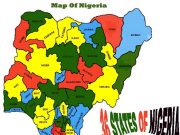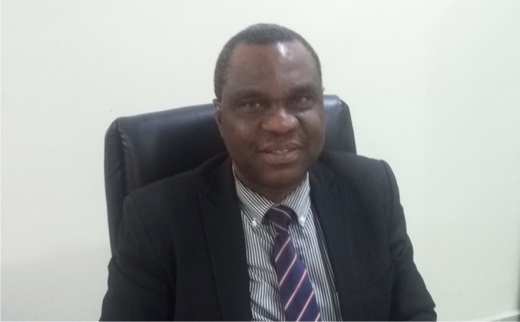Once the dry season sets in, residents of Ibadan, currently adjudged Nigeria’s third largest metropolitan city, enjoy some measure of relief, borne out of the fact that the fear of flooding is kept at bay, at least while the dry season lasts. This is based on the fact that Ibadan has witnessed massive flooding over the years, with the first officially recorded one being in 1951. Since then, there have been sporadic flooding incidents plaguing the sprawling city, with attendant tragic after-effects on lives and property.
While there were more floods in the 1980s than in the preceding decades, perhaps the worst flooding episode was the one that took place on 26th August, 2011 which destroyed most of the strategic, flood-channeling hydraulic structures in the ancient city, in addition to colossal loss of human and animal lives. According to a report titled “The August 2011 Flood in Ibadan, Nigeria: Anthropogenic Causes and Consequences” by a team of experts commissioned by the Oyo State Government, it was stated that “Despite the fact that the rainfall of 26 August 2011 was not the highest in the recorded history of the city, the monetary value of damages to property that resulted from the event were by far the highest.”
This, perhaps, propelled the Oyo State Government to evolve far-reaching and enduring measures that would once and for all put a stop to the perennial flooding that has become the lot of Ibadan. This holistic approach was much unlike the disposition of successive governments in the past whose efforts towards checkmating the frequent menace had at best been mere palliative measures to contain flooding and redress damages done to people and infrastructure.
Given the magnitude of the problem, the Oyo State Government, through the Federal Government of Nigeria, sought and got the assistance of the World Bank to bankroll a massive infrastructural redesign and reconstruction, whose thrust is to change the face of the architectural landscape of the historic city, while frontally addressing the perennial and seemingly intractable problem of flooding. This initiative and intervention gave birth to commencement of work on what is now known as the “Four Priority Sites” of Ogbere-Pegba, Cele Rainbow, Shasha-Osajin, and Ola-Adua areas, which were among the worst flood-hit areas over the years.
Acting through the Ibadan Urban Flood Management Project (IUFMP), the Oyo State Government, initiated work on construction of massive hydraulic infrastructural facilities at the above-mentioned areas, whilst identifying other sites that are also notorious for heavy flooding in Ibadan.
It is noteworthy that work on the afore-cited four sites has since been completed and the structures are now being put to use, even with completion of construction of extended access roads designed to link up more communities hitherto cut off by past flood events. All these are looking well primed to serve the city well in the task of flood control and channeling round the year.
Also gratifying is the fact that reconstruction work on the “Thirteen Priority Sites” and the “Rehabilitation of Eleyele Dam”, which strategically dot the arterial landscape of Ibadan and have direct bearing with the areas usually ravaged by flooding, is progressing steadily.
Also in direct connection with the foregoing is the Flood Risk Management and Drainage Masterplan, which is intended to enhance the channelization of rainwater and flood across the length and breadth of the city, amongst other more enduring benefits. When the masterplan is executed and the proposed new channels are in place, they will effectively complement the existing drainage channels, thus ensuring a well-drained cityscape in Ibadan and environs.
Still in consonance with the holistic and comprehensive approach to checkmating flooding in Ibadan, the IUFMP mandate also includes developing a Solid Waste Management Masterplan. The aptness of this is underscored by the fact that Ibadan’s incessant flooding has been largely attributable to anthropogenic, or man-made, factors, chief of which is indiscriminate disposal of solid waste on drainage channels, waterways, flood paths and other such unauthorized places. It is, therefore, plausible to argue that an effective waste disposal method is a sine qua non for a flood-free city. The peculiarity of Ibadan Metropolis, especially the expansive unplanned, traditional parts of the city, underscores the essence and imperative of a well-thought-out and properly executed solid waste management masterplan for Ibadan megacity.
The overarching element in the whole process of upgrading Ibadan to its deserved status of a 21st Century mega city is the Ibadan City Masterplan, whose thrust is to evolve a sustainable, connected, resilient, enterprising, cultural, and green city. Amongst other propositions, the masterplan proposes to make structural adjustments within the Core Area of the city and take initiatives to create a clean and healthy built environment. It is based on a 20-year growth projection framework (2016 to 2036), and it touches on a broad spectrum of the lives of the people, including transport network, employment, telecommunications, power supply, water supply, drainage system, solid waste management, waste water management, without leaving out basic necessities like public schools, public health facilities, and so on.
Added to the foregoing is the renewed vigour of the Oyo State Government to intensify implementation of the extant Town Planning laws, not only in Ibadan but also in other major cities and towns of the state. With this, those who, whether by decision or default, build on waterways and flood paths will have the government to contend with!
This brings to the fore the critical role expected to be played by the generality of Ibadan residents in the drive to achieve the critical mandate. As alluded to earlier in the report of a study done on the 26th August, 2011 flooding incident, a number of man-made factors were fingered as the causative agents for the incessant Ibadan flooding. These would be analyzed in some details in the ensuing paragraphs.
Topmost amongst the factors or causative agents is the challenge of solid waste management in the metropolitan city of Ibadan. On account of its ever-growing population structure, Ibadan generates a massive volume of solid waste materials, which are expected to be ferried by the appointed waste disposal contractors assigned to the different parts of the city for discharge at the nearest of the four official dumpsites in Ibadan, at Aba-Eku, Ajakanga, Awotan and Lapite. However, obviously bolstered by a popular but erroneous local Ibadan parlance which transliterates thus “It is inconceivable to spend money to buy corn pap and still spend money to dispose of the leafy wraps”, some sizeable fractions of the city populace are still acting in contravention. This is a most anachronistic philosophy for dwellers of a 21st Century megacity! It bespeaks of hardcore, stick-in-the-mud beliefs and habits that need to change, and very urgently too!
One cannot over-emphasize the import of imbibing the right attitude to waste disposal and management. At a stakeholders’ engagement forum organized by the Oyo State Waste Management Agency (OYOWMA) sometime back, a top executive of the outfit, submitted that out of the total waste generated by the over six hundred and fifty thousand (650,000) households in the urbanized parts of Ibadan, only 35% are properly disposed at the above-listed official dumpsites! The rest end up at wrong locations, which ultimately become blockages of water channels and flood paths. It is in view of this that the state government came up with the ‘One House, One Waste Bin’ campaign, which is aimed at significantly raising the volume of wastes that are appropriately disposed.
A twin-factor to the waste disposal menace is the challenge of outright or partial disregard of the Oyo State Environmental and Town Planning Laws, especially as concerns building around rivers, waterways, flood paths and drainage channels. In contravention of extant laws on this, people willfully acquire lands and build at inappropriate places, which stand in the way of flood water when the rains come. With renewed vigour, the Oyo State Government has re-committed to averting building at such unauthorized places and pulling down existing ones. This is also along the line of ensuring a well-drained city, where river and flood water runs its course unhindered and without coming in the way of human activities and day-to-day living.
The surmising factor to changing the narrative about the perennial prevalence of flooding in Ibadan is positive change of behaviour. As aptly and succinctly captured by an expert recently, “Infrastructure alone cannot solve the menace of flooding. We need positive change of behaviour.” This underscores the commitment of the government machinery to constant and regular engagement with the varying shades of stakeholders and community groupings on the all-important subject.
It may, therefore, be safe to conclude that, with all these commitments from all stakeholders, Ibadan might just be on its way to becoming a flood-free city.
Adefioye, Communication Consultant to the Ibadan Urban Flood Management Project (IUFMP), wrote in via abiodefi@yahoo.co.uk


































































